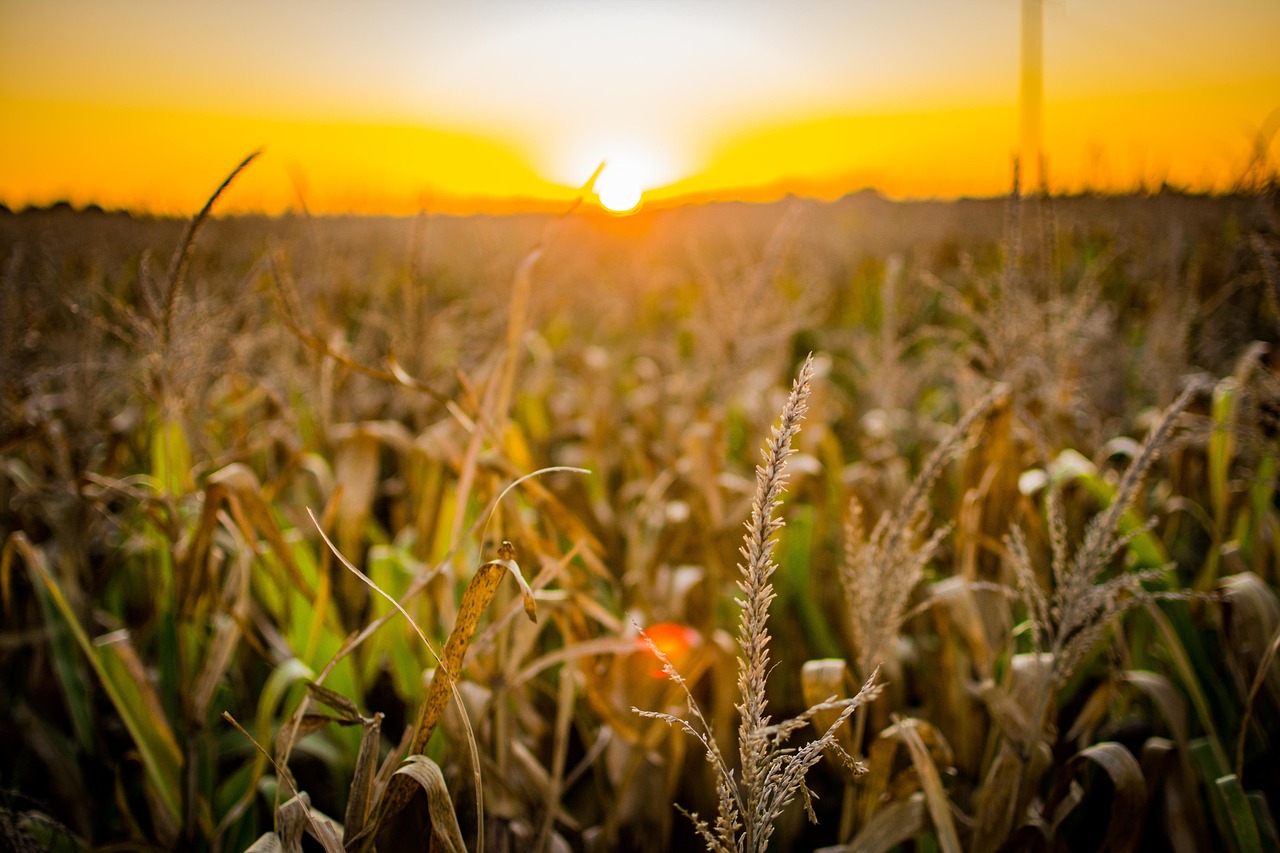
Image: Pixabay
Many of Crop Watch's U.S. corn and soybean fields were stressed last week under mostly dry conditions, but several rounds of rain over the weekend kept yield expectations from falling. Crop Watch condition and yield scores, especially for corn, dropped considerably last week with the hot and dry end of July, but this week's stabilization and a favorable forecast for the coming days could keep those scores stable or at high.Coupled with scattered rain chances covering much of the Corn Belt, this week's normal to cooler temperatures will be helpful for filling corn kernels.
Soybeans could still benefit greatly from rain in the coming weeks, but the rain's impact on corn is starting to lessen. Crop Watch growers in Kansas and Nebraska report that rain may no longer help non-irrigated corn fields, although corn in southeastern Illinois may have another week or two.
Last week's Crop Watch rainfall totals were mainly concentrated over the weekend, although not all areas received the irrigation they needed. Southeastern Illinois got a quarter of an inch of rain, making it four consecutive weeks of minimal to no rain. Soybeans in North Dakota received just 0.2 inches, although corn fared better with 1.4 inches.
More than 3 inches of rain was observed in South Dakota, Nebraska, western Iowa and western Illinois, and Indiana picked up 2 inches. Less than an inch fell in Ohio, Kansas and eastern Iowa, and up to 1.5 inches was recorded in Minnesota, although the latter two growers noted that heavy dew helped keep crops stable.
INCOME AND CONDITIONS
The average corn yield score across 11 fields increased to 3.89 from 3.84 last week, with quarter-point improvements in North Dakota, Nebraska, western Iowa and Indiana offsetting a half-point drop in the southeastern Illinois. The new score is very similar to the producers' view in the same weeks in 2021 and 2022.
Crop Watch growers have been rating both growing conditions and yield potential on scales of 1 to 5. Condition scores are a primarily visual assessment similar to the U.S. government's, where 1 is very poor, 3 is average, and 5 is excellent.
Yield potential extends to non-visible elements and may vary by condition. On this scale, 3 is around the average farm yield, 4 is solidly above average, and 5 is among the best harvests ever.
Average corn condition fell slightly to 3.93 from 3.95 last week, with half-point decreases in Minnesota and southeastern Illinois and quarter-point bumps in North Dakota, Nebraska and Indiana.
Producers feel better about the yield outlook for soybeans relative to corn, especially given the impact that August rains could have on beans.
Average soybean yields across 11 fields rose from 4.09 to 4.11 last week, with quarter-point cuts in North Dakota and southeastern Illinois surpassed by quarter-point increases in Indiana, western Iowa and Nebraska.
The soybean yield score of 4.11 is notably better than it has been at this point in the past two years. For example, the western Iowa grower this week described his beans as phenomenal, while the Ohio field looked incredible. However, the eastern Iowa grower said his beans need more rain and sun.
Average soybean condition remained unchanged this week at 4.07, with quarter-point increases in Nebraska and western Iowa offsetting a half-point decrease in southeastern Illinois.
The following are the 2023 Crop Watch corn and soybean fields states and counties: Kingsbury, South Dakota; Freeborn, Minnesota; Burt, Nebraska; Rice, Kansas; Audubon, Iowa; Cedar, Iowa; Warren, Illinois; Crawford, Illinois; Tippecanoe, Indiana; Fairfield, Ohio. North Dakota corn is in Griggs County and soybeans are in Stutsman County.
Source: agrolink
{module Read Also}

Copyright © 2023 Aboissa Commodity Brokers. All rights reserved.
Fill out the form and get support for your business needs.
Our experts are ready to offer customized solutions.